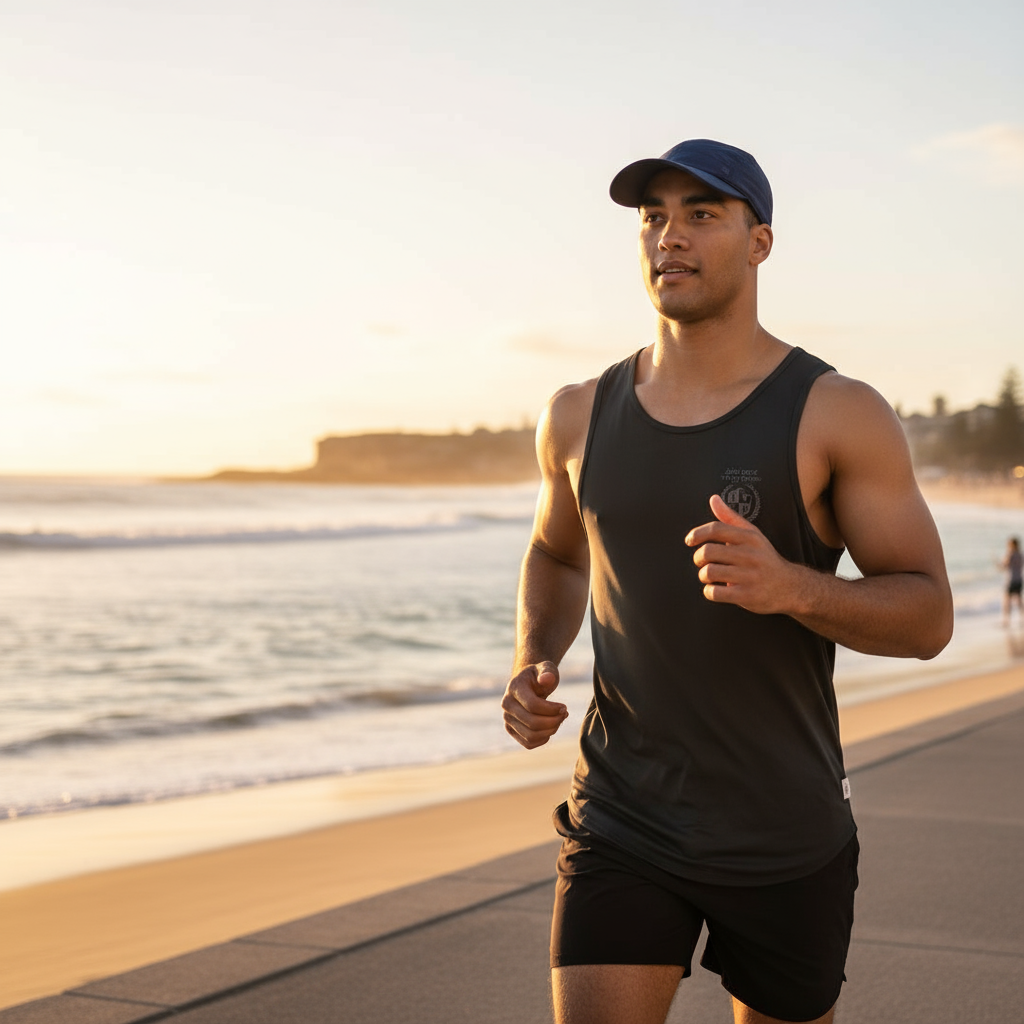Moisture-Wicking Singlets: Australian Runner’s Guide (Summer 2025)
Intro
Running through a Sydney summer is no joke — the heat, the humidity, the glare off the sand at North Steyne. I’ve learnt the hard way that what you wear can make or break your session. A heavy cotton singlet might look fine when you leave the house, but halfway through a run along the Northern Beaches it feels like you’re carrying an extra kilo.
That’s where moisture-wicking singlets come in. They’re built to keep you light, cool, and dry when the Aussie summer turns brutal. I’ve tested more than a few — from early-morning runs at Curl Curl to tempo sessions up the Manly-to-Freshie stretch — and here’s what really matters when you’re choosing the right one.
1. What Moisture-Wicking Actually Means
Moisture-wicking fabric doesn’t just dry fast; it actively draws sweat off your skin and spreads it across the surface so it evaporates quicker. That means less cling, less chafing, and more comfort.
Look for technical fabrics like:
-
Polyester blends: lightweight, quick-drying, and the standard for most performance gear.
-
Nylon blends: smooth, durable, and great for runners who train daily.
-
Merino wool (lightweight): for cooler mornings — naturally breathable but still moisture-managing.
I’ve found the AeroFlex™ fabric we use in the Momentum Singlet (90% polyester / 10% elastane) hits the sweet spot — feather-light, breathable, and just stretchy enough to move with you. It’s been tested through countless Sydney summer training blocks, from humid mornings to hot-as-hell afternoons.
2. Fit That Moves With You
You want a singlet that sits close without feeling tight. Too loose, and it flaps around in the wind along the beachfront; too tight, and it traps heat.
A good test? Raise your arms overhead. If it lifts too high or pulls across your chest, size up. Modern training fits are slightly tapered — enough shape to stay in place but still let you move freely through stride and stretch.
I wanted a cut that worked from coastal wind to mountain humidity, so we refined the fit — close through the chest, relaxed through the shoulders. That balance came from feedback from runners training everywhere from Bondi heat to Blue Mountains humidity.
3. Ventilation & Details That Matter
Laser-cut perforations, bonded seams, and under-arm panels aren’t marketing fluff — they’re what separate an average singlet from a true performance one. These small features make a big difference during 30-degree sessions.
And if you’re running near the coast (like most of us up here), salt and humidity test every seam, so stick with singlets built to handle both sweat and sea air.
4. UPF Protection & Colour Choice
In an Australian summer, sun protection is part of performance. Look for UPF 40+ rated fabrics that block UV rays while staying breathable.
When it comes to colour, there’s a trade-off: dark colours look sleek but absorb more heat; lighter shades reflect the sun better during midday runs.
We currently offer our singlets in two versatile options:
-
Pewter — a dark, sophisticated grey that hides sweat marks during long sessions.
-
Khaki — a lighter, earthy neutral that reflects heat and suits any session.
Both work across Australian conditions. I tend to reach for khaki on hotter midday runs and pewter for early mornings or cooler sessions. The key is choosing a shade you’ll actually wear — the best singlet is the one that doesn’t sit in your drawer.
5. Built to Last — Care & Durability
A quality moisture-wicking singlet should survive season after season of hard training. Here’s how to keep yours performing:
-
Rinse straight after sweaty sessions (salt and sweat break down fibres faster).
-
Skip the fabric softener — it clogs the wicking channels.
-
Hang dry in the shade, same way you’d treat your boardies after a surf.
-
Wash with similar colours to prevent fading.
We’ve built ours with reinforced seams and colour-fast dyes that hold up to Australian sun and salt air. Some of the crew training here on the Beaches have put 500+ kilometres on theirs without losing shape — proof that a good singlet earns its keep.
Wrap-Up
When it comes to summer training, a moisture-wicking singlet isn’t just comfort — it’s performance. The right one helps you stay cooler, run longer, and finish fresher. Whether you’re chasing PBs on the Dee Why-to-Manly path or surviving a humid afternoon jog, the right gear makes all the difference.
Every piece we make is tested right here on the Northern Beaches — same heat, same salt air, same grind. If it works here, it’ll work anywhere.
👉 Shop moisture-wicking singlets built for Aussie heat: https://agility.fit/collections/singlets
